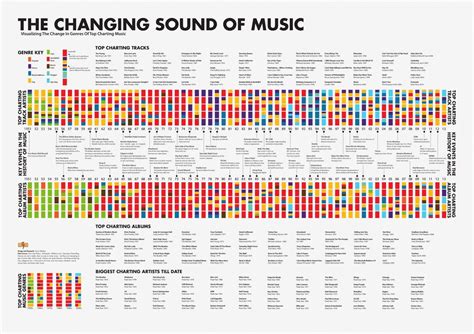Music has been a fundamental part of human culture for centuries, with each era and civilization contributing to its evolution. From the melodic and harmonious compositions of classical music to the energetic and diverse sounds of contemporary genres, the journey of music has been nothing short of transformative. In this blog post, we will explore the fascinating evolution of music, delving into the roots of classical music, the emergence of jazz, the birth of rock and roll, and the influence of soul, R&B, electronic, hip-hop, and alternative and indie on contemporary genres. We will also take a glimpse into the future trends of music, including fusion and innovative genres that promise to shape the musical landscape in the years to come. Join us as we embark on a captivating exploration of the dynamic and ever-changing world of music.
Table of Contents
Introduction to the Evolution of Music
Music has a rich and diverse history that spans across cultures and centuries. The evolution of music reflects the ever-changing human experience and the development of technology. From simple vocalizations to complex symphonies, music has been an integral part of human society. This blog post will explore the different periods and genres that have shaped the modern music landscape.
As we delve into the roots of music, we will discover the earliest forms of musical expression, such as tribal chants and folk songs. These simple melodies laid the foundation for the complex compositions we hear today. The influence of these early musical traditions can still be felt in modern genres, demonstrating the enduring power of music.
The emergence of classical music marked a turning point in the history of music. With the rise of orchestral ensembles and complex compositions, classical music paved the way for new forms of artistic expression. This period of musical innovation laid the groundwork for the diverse range of genres that we enjoy today.
From classical music to jazz, rock and roll, and electronic music, the evolution of music has been a dynamic journey that continues to shape our cultural identity. This blog post will delve into the influences and innovations that have propelled music forward, creating a rich tapestry of sounds and styles that reflect the human experience.
The Roots of Classical Music
Classical music, often referred to as the art music, has a rich and diverse history dating back centuries. It has a strong foundation in Western culture and has influenced numerous musical genres. The roots of classical music can be traced back to ancient civilizations such as the Greeks, Romans, and Egyptians, where music played a vital role in daily life and religious ceremonies.
During the medieval period, the early forms of classical music started to emerge, with the development of monophonic chants and sacred vocal music. This period laid the groundwork for what would later evolve into the intricate polyphonic compositions of the Renaissance era.
The Renaissance period brought about significant advancements in musical notation, which allowed for more complex and harmonically rich compositions. This era also saw the rise of instrumental music, with the development of early forms of keyboard and string instruments, paving the way for the orchestral music that would become synonymous with classical music.
The Baroque period marked a shift towards highly ornate and expressive compositions, characterized by intricate melodies, rich harmonies, and the newfound popularity of opera. Composers such as Johann Sebastian Bach, George Frideric Handel, and Antonio Vivaldi made significant contributions to the development of classical music during this period, laying the groundwork for the musical innovations of the following eras.
Romanticism and the Emergence of Orchestral Music
Romanticism and the emergence of orchestral music in the 19th century marked a significant shift in the music landscape. The Romantic era was characterized by a deep appreciation for emotion, individualism, and the awe-inspiring power of nature. During this period, composers pushed the boundaries of musical expression and turned to orchestral music as a means of conveying the intensity of their emotions.
Orchestras expanded in size and scope, incorporating a wider range of instruments and creating compositions that were grander and more dynamic than ever before. The Romantic period saw the development of orchestral works that were deeply emotive and often drew inspiration from literature, art, and nature.
Composers such as Beethoven and Tchaikovsky were at the forefront of this movement, creating symphonies, concertos, and tone poems that captured the ethos of the Romantic era. Their compositions often featured dramatic shifts in dynamics, lush orchestration, and rich harmonies, reflecting the turbulent and passionate spirit of the time.
The emergence of orchestral music during the Romantic era laid the foundation for the orchestral works that continue to captivate audiences today, demonstrating the lasting impact of this period on the evolution of music.
Jazz: Blending African Rhythms and European Harmonies
Jazz music, often referred to as America’s classical music, has a rich and diverse history that spans continents and cultures. Its roots can be traced back to the blending of African rhythms and European harmonies in the early 20th century. The fusion of these two distinct musical traditions created a unique and innovative sound that has had a lasting impact on the world of music.
One of the key elements of Jazz music is its incorporation of African rhythmic structures, such as syncopation and polyrhythms. These rhythms were brought to the United States by African slaves and have since played a central role in the development of Jazz. The use of call-and-response patterns, improvisation, and a strong emphasis on rhythm and groove are all hallmarks of Jazz music that can be directly traced back to African musical traditions.
On the other hand, European harmonies and musical traditions also had a significant influence on the development of Jazz. European immigrants brought with them their own musical styles and instruments, which were incorporated into the evolving Jazz sound. The use of chord progressions, scales, and melodic structures from European classical music added a new layer of complexity and sophistication to Jazz, setting it apart from other musical genres.
As Jazz continued to evolve and spread across the globe, it continued to absorb and integrate elements from other musical traditions, creating a rich tapestry of sounds and styles that continues to inspire and influence musicians to this day.
The Rise of Popular Music and the Birth of Rock and Roll
Popular music began to take shape in the early 20th century, as advancements in technology allowed for the mass production and distribution of music. This led to the birth of a new era in music, characterized by catchy melodies and relatable lyrics that appealed to a wider audience.
As popular music gained momentum, it started to blend with other genres, such as blues and country, giving rise to a new sound that would eventually become known as rock and roll. This genre was characterized by its energetic rhythms, electric guitar-driven melodies, and rebellious attitude, making it a symbol of youth culture and rebellion.
The emergence of rock and roll had a profound impact on society, influencing fashion, language, and attitudes towards authority. It became a symbol of freedom and self-expression, appealing to a generation that was eager to break free from the constraints of the past.
Rock and roll also paved the way for the future of popular music, inspiring countless artists and bands to experiment with new sounds and push the boundaries of the genre. Its influence can be seen in the evolution of music to this day, making it a pivotal moment in the history of popular music.
Exploring the Influence of Soul and R&B on Contemporary Genres
Exploring the Influence of Soul and R&B on Contemporary Genres
Soul and R&B music have had a profound impact on contemporary genres, shaping the way we listen to and appreciate music today. Both genres emerged as a reflection of the African-American experience, blending elements of gospel, blues, and jazz to create a soulful and emotive sound that resonated with audiences across the world.
From the iconic voices of Aretha Franklin and Marvin Gaye to the innovative production techniques of Motown and Stax Records, soul and R&B laid the foundation for the modern music industry. Their influence can be heard in the rhythms and melodies of pop, hip-hop, and electronic music, demonstrating the enduring legacy of these genres.
Contemporary artists like Beyoncé, Kendrick Lamar, and Frank Ocean continue to draw inspiration from the soul and R&B traditions, infusing their music with an emotional depth and authenticity that captivates listeners. The fusion of old-school soul with modern production techniques has given rise to a new wave of artists who are pushing the boundaries of genre and creating music that is both timeless and relevant.
As we continue to explore the influence of soul and R&B on contemporary genres, it becomes clear that their impact extends far beyond their original era. Their unique blend of raw passion and musical sophistication continues to inspire and shape the sounds of today, ensuring that the legacy of soul and R&B will endure for generations to come.
Electronic Music: From Synthesizers to EDM
Electronic music has undergone a remarkable evolution, shaping the sound of the modern music industry. The use of synthesizers revolutionized electronic music by allowing artists to create unique and innovative sounds that were not possible with traditional instruments. The development of synthesizers in the mid-20th century opened up a new realm of possibilities for musicians, paving the way for the electronic music genre to flourish.
As technology continued to advance, the emergence of EDM (Electronic Dance Music) transformed the electronic music scene by bringing a new energy and vitality to the industry. Artists and producers were able to use electronic tools and software to create complex and dynamic beats, resulting in a fusion of genres that captivated audiences around the world.
From the experimental sounds of early electronic music to the pulsating rhythms of EDM, the genre has continuously evolved and adapted to the changing musical landscape. Electronic music has become a driving force in contemporary music, influencing a wide range of genres and pushing the boundaries of creativity and innovation.
With its ability to defy traditional conventions and push the limits of sonic exploration, electronic music continues to inspire and captivate audiences, ensuring its enduring presence in the ever-changing world of music.
Hip-Hop: From Streets to Mainstream
Hip-hop, a cultural movement that emerged in the Bronx, New York City, in the 1970s, has evolved from its humble beginnings in the streets to becoming a dominant force in mainstream music and popular culture.
Originally, hip-hop was a form of self-expression for urban youth, primarily African American and Latino, who faced economic hardship and social marginalization. Rap, a key element of hip-hop, provided a platform for artists to address issues of inequality, poverty, and racial discrimination. The music was a reflection of the experiences and struggles of the marginalized communities from which it emerged.
As hip-hop gained popularity, it transcended its regional roots and began to spread across the United States and eventually around the world. The emergence of iconic hip-hop artists such as Run-D.M.C., LL Cool J, and Public Enemy brought the genre into the mainstream spotlight, prompting a shift in the music industry.
Today, hip-hop has become a global phenomenon, influencing fashion, language, and popular culture. Its impact on mainstream music and entertainment has been undeniable, with artists like Jay-Z, Kanye West, and Drake achieving widespread commercial success and critical acclaim.
Alternative and Indie: Embracing Non-Conformity
In a world where mainstream music often follows a predictable formula, alternative and indie music have carved out a space for artists who want to embrace non-conformity and express their unique creative vision. These genres prioritize authenticity and individuality, offering a platform for musicians to explore unconventional sounds and lyrical themes.
One of the key features of alternative and indie music is its rejection of commercialism and the pressure to fit into a specific mold. Instead, artists in these genres are encouraged to push boundaries and challenge the status quo, creating music that is raw, honest, and thought-provoking.
Another defining characteristic of alternative and indie music is its DIY ethos. Many artists in these genres operate independently, releasing their music through small record labels or even self-publishing. This hands-on approach allows for greater creative control and freedom, enabling musicians to stay true to their artistic vision without external interference.
Overall, alternative and indie music offer a refreshing departure from the mainstream, embracing non-conformity and celebrating the diversity of musical expression. As these genres continue to evolve, they serve as a reminder that true artistry knows no boundaries and that there is beauty in embracing the unconventional.
Future Trends: Fusion and Innovative Genres
In the rapidly changing landscape of the music industry, future trends in music are constantly evolving and embracing new forms of fusion and innovative genres. This ongoing shift in musical tastes and preferences reflects the dynamic nature of our society and the continuous experimentation of artists and musicians.
The fusion of different musical styles and genres has become increasingly popular, as artists seek to push the boundaries of traditional music and create fresh, groundbreaking sounds. This trend is evident in the emergence of genres such as electro-pop, indie-folk fusion, and world music fusion, where artists combine elements from diverse cultural backgrounds to produce unique and captivating compositions.
Furthermore, the rise of innovative technologies and digital platforms has paved the way for new genres such as electronic dance music (EDM), future bass, and vaporwave. These genres offer a futuristic and experimental approach to music production, incorporating cutting-edge sound design and unconventional musical structures.
As we move forward, it is clear that the future of music will continue to embrace fusion and innovative genres, as artists strive to redefine conventional norms and challenge existing boundaries. This trend not only reflects the creative freedom of musicians but also the ever-changing preferences of listeners, who are eager to explore new and unconventional sounds.





